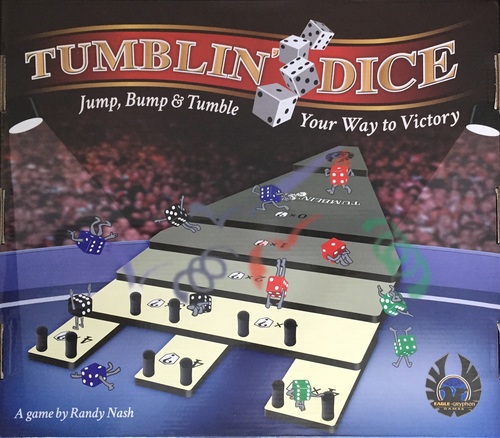|
This shows some of the party/social games that might be played at the convention, depending on player interests. What's a party/social game?
Well, they can be strategic, like CoG's typical
tournament games, but their focus is getting a group of people smiling, laughing, and having a great time with each other.
You don't have to be familiar with any of these games to play them. Each party/social game includes a demo and coached play, with some game starts specified in the online schedule.
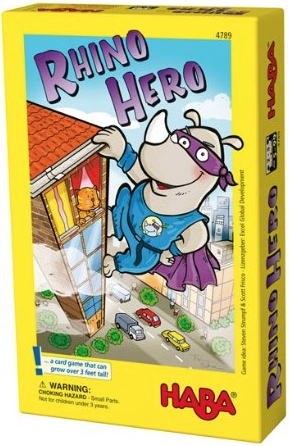
|
HABA Showcase/Silly Dexterity Games – A time to play kids games both with and without kids.
Games could include:
Klondike,
Crash Cup,
Bugs in the Kitchen,
Connect 4 Launchers,
Ring-o Flamingo,
Loopin Louie,
Rhino Hero,
Dancing Eggs,
Black Pirate,
Iceburg Hustle,
Castle Knights,
Strong Stuff,
Castle Blast
etc.
|
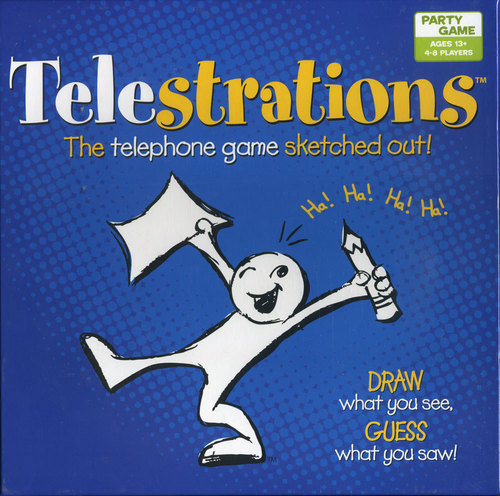
|
Telestrations
(up to 12 players per game)/Telestrations After Dark (Up to 8 per game).
Each player begins by sketching a TELESTRATIONS word dictated by the roll of a die. The old fashioned sand
timer may limit the amount of time they get to execute their sketch, but it certainly doesn't limit creativity! Time's
up! All players, all at the same time, pass their sketch to the next player, who must guess what's been drawn.
Players then simultaneously pass their guess -- which hopefully matches the original word (or does it??) -- to the
next player who must try to draw the word they see -- and so on.
|

|
Clusterfight (up to 12 players a game) (was a Dice Tower Award Nominee).
Clusterfight is a party game of hypothetical battles for 3-12 players. If you've ever stayed up
into the wee hours debating the finer points of Freddy vs. Jason, or Kirk vs. Picard, this
game's for you. And seriously, who really thinks that the landmark case of Alien vs. Predator
settled anything? Nobody even stopped to ask, "What if Predator had laser eyes?"
Each round in Clusterfight, players throw combatants into the ring, then change the dynamics
of the fight with "battle cards". Sure, Batman could beat up the Pope, but what if Batman
was "Vomiting Uncontrollably" and the Pope was "Fighting Mad"? Everyone has a chance to bet
on the outcome, then a judge decides the winner and bets are settled. When all players have
judged twice, the player with the most points wins!
|

|
Concept (Up to 12 players per game).
In Concept, your goal is to guess words through the association of icons. A team of two players – neighbors at the table – choose a word or phrase that the other players need to guess. Acting together, this team places pieces judiciously on the available icons on the game board.
To get others to guess "milk", for example, the team might place the question mark icon (which signifies the main concept) on the liquid icon, then cubes of this color on the icons for "food/drink" and "white". For a more complicated concept, such as "Leonardo DiCaprio", the team can use the main concept and its matching cubes to clue players into the hidden phrase being an actor or director, while then using sub-concept icons and their matching cubes to gives clues to particular movies in which DiCaprio starred, such as Titanic or Inception.
The first player to discover the word or phrase receives 2 victory points, the team receives points as well, and the player who ends up with the most points wins.
|

|
Reverse Charades (Unlimited players)
Reverse Charades flips the charade standard, of one person giving clues to a large group, on its head by splitting the players (six or more) into two teams, then having all but one person on a team work together to get that one person to guess as many words as possible in sixty seconds. Each guessed word is worth one point; each word spoken or mouthed costs that team a point.
After each player has guessed once, the team with the most points wins.
|
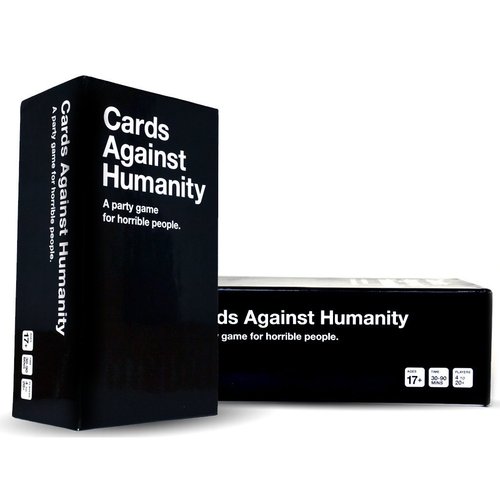
|
Cards Against Humanity
A card game which involves a judge choosing a black question or fill-in-the-blank card. Each
player holds a hand of ten cards at the beginning of each round, and each player
contributes card(s) to the "card czar" anonymously. The card czar determines which card(s)
are funniest in the context of the question or fill-in-the-blank card. The player who
submitted the chosen card(s) is given the question card to represent an "Awesome Point."
|
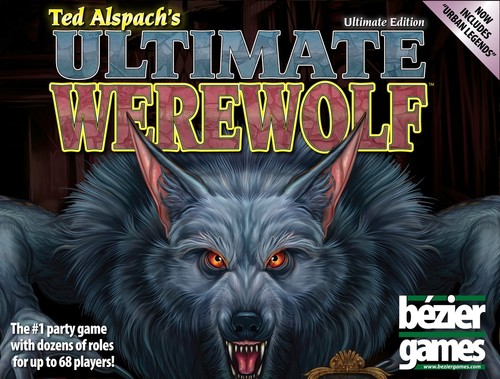
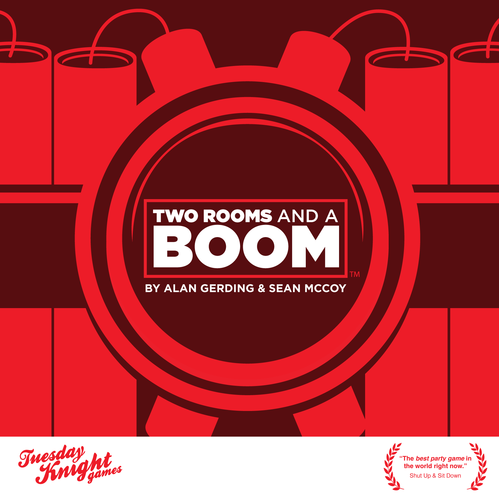
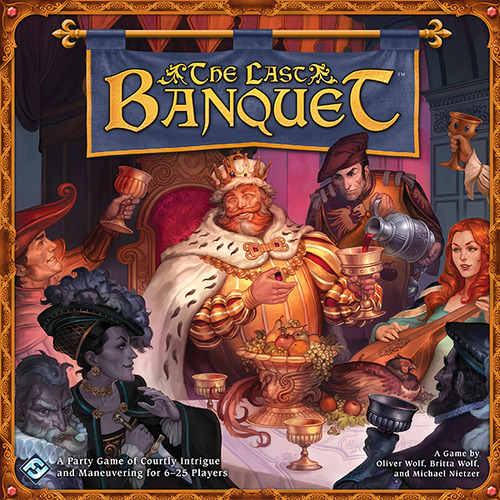
|
Massive Multiplayer Theater – a time to celebrate games that play A TON OF PEOPLE!!!
Werewolf
Your quiet little 16th century village has suddenly become infested with some very unfriendly
werewolves. Can you and the other villagers find them before they devour everyone?
The Ultimate Edition is the ultimate party game for anywhere from 5 to
68 players of all ages. Each player has an agenda: as a villager, hunt down the werewolves;
as a werewolf, convince the other villagers that you're innocent, while secretly dining on
those same villagers each night. Dozens of special roles are available to help both the
villagers and the werewolves achieve their goals while thwarting their opponents.
Two Rooms and Boom
In Two Rooms and a Boom – a social deduction/hidden role party game for six or more players –
there are two teams: the Red Team and the Blue Team. The Blue Team has a President. The
Red Team has a Bomber. Players are equally distributed between two rooms (i.e., separate
playing areas). The game consists of five timed rounds. At the end of each round, some
players will be swapped into opposing rooms. If the Red Team's Bomber is in the same
room as the President at the end of the game, then the Red Team wins; otherwise the
Blue Team wins. Lying encouraged.
The Last Banquet
The king is holding a great banquet for all the nobles in the realm so that they can bathe in his splendour. Artists and troubadours will bring the necessary entertainment. It is meant to be a feast that will long be remembered!
The guests attending the feast hall feel the same, for in the corners of the castle deadly plots are being developed. The guests are divided into two factions, with both planning to "dismiss" the king. One faction plans to smuggle a dagger into the feast hall to "open the king's heart to the realm" at the right time, while the other faction hopes to give the king "renewed motivation" with a poisoned drink.
In The Last Banquet, each player is a guest at the feast and needs to help his faction reach its goal and ensure that this will truly be the king's last banquet. The game includes 25 role cards, each portraying a person on the front and listing that person's skills on the back. In addition to "The Last Banquet", several other scenarios are provided in the rules that can be played with each of the roles. (GameHeads' Oliver Wolf notes, "Playing time ranges from 30 minutes up to 90 minutes or more, with more people tending to need more time to play." Also, some scenarios involve more than two factions.) Obstacle cards provide challenges for players to overcome.
When a faction succeeds in its goal, all players who belong to that faction win the game.
|

|
SpyFall, up to 8 players
Spyfall is a party game unlike any other, one in which you get to be a spy and try to understand
what's going on around you. It's really simple!
Spyfall is played over several rounds, and at the start of each round all players receive
cards showing the same location — a casino, a traveling circus, a pirate ship, or even a
space station — except that one player receives a card that says "Spy" instead of the location.
Players then start asking each other questions — "Why are you dressed so strangely?" or
"When was the last time we got a payday?" or anything else you can come up with — trying
to guess who among them is the spy. The spy doesn't know where he is, so he has to listen
carefully. When it's his time to answer, he'd better create a good story!
At any time during a round, one player may accuse another of being a spy. If all other players
agree with the accusation, the round ends and the accused player has to reveal his identity.
If the spy is uncovered, all other players score points. However, the spy can himself end
a round by announcing that he understands what the secret location is; if his guess is correct,
only the spy scores points.
After a few rounds of guessing, suspicion and bluffing, the game ends and whoever has scored
the most points is victorious!
|

|
A Fake Artist Goes to New York (like Spyfall w/ drawing)
Title is pronounced as "Ese Geijutsuka New York e Iku" and
can be translated as "Fake Artist Goes to New York" – is a party game for 5-11 players.
Players take turns being the Question Master, whose role is to set a category,
write a word within that category on dry erase cards, and hand those out to other
players as artists. At the same time, one player will have only an "X" written
on his card. He is the fake artist!
Players will then go around the table twice, drawing one contiguous stroke
each on a paper to draw the word established by the Question Master,
then guess who the fake artist is. If the fake artist is not caught,
both the fake artist and the Question Master earn points; if the fake
artist is caught and cannot guess what the word is, the artists earn points.
|
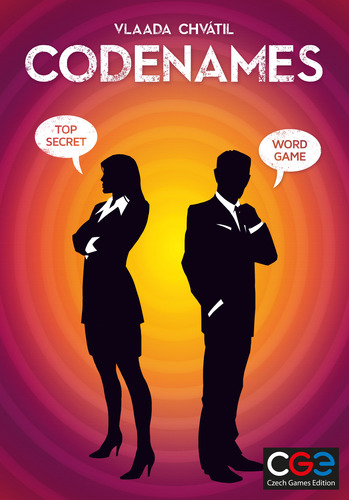
|
Codenames (up to 8 players per game)
Two rival spymasters know the secret identities of 25 agents. Their teammates know the
agents only by their CODENAMES.
In Codenames, two teams compete to see who can make contact with all of their agents
first. Spymasters give one-word clues that can point to multiple words on the board.
Their teammates try to guess words of the right color while avoiding those that belong
to the opposing team. And everyone wants to avoid the assassin.
Codenames: Win or lose, it's fun to figure out the clues.
|

|
Pictomania (Up to 6 players per game)
Pictomania is a drawing game in which everyone is both drawing and guessing at the same time, giving a chance for those who excel only at one or the other skill to crush the dreams of other players.
Pictomania lasts five rounds, and at the start of each round, you set up six randomly drawn cards on card racks visible to all players. Cards are double-sided, come in four levels of difficulty, and include seven related words on a single side. In addition to a set of guessing cards, scoring tokens, marker and drawing board, each player receives one symbol card and one number card, which together indicate which word or phrase on the revealed cards that player must draw. Bonus tokens equal to one less than the number of players are placed in the center of the table.
Players simultaneously look at their cards and start to draw. While drawing, they can also watch what others are doing and place a guess card on that player's stack. Only one guess per player is allowed, and once you make a guess, you can't change your mind. Other players will ideally be playing guess cards on your stack, too. Once you have finished drawing and guessing – and you're not required to do either – take the highest-valued bonus token from the center of the table and take no other actions. Once the final bonus token is claimed, the round ends.
One by one, players reveal what they were drawing and the guesses that others made. Those who guess your word earn one of your scoring tokens, with early guessers earning more points, while those who guess incorrectly have their card placed in the center of the table. Once all the guesses are resolved, you determine the black sheep – the player who made the worst guesses. If a single player has more cards in the center of the table then anyone else, then his bonus token (if any) counts as negative points. What's more, if no one guessed your word, then you throw away your bonus token, scoring nothing for it. You sum positive points for the round (a bonus token scored, and scoring tokens from the words you guessed correctly), then subtract points for the black sheep "bonus" and all the scoring tokens you didn't give away to determine your final score for the round, which could be negative.
Reset the bonus and scoring tokens, set up six new cards, hand out the symbol and number cards and start another round. The player with the highest score after five rounds wins.
|
Event Coordinator: Ryan Blodgett.
|










